Gym Rings vs Pull-Up Bar🔥Why Rings Are BETTER
Gym rings are more versatile and engage more muscles than pull-up bars. They let you perform a wider range of exercises, activating stabilizer muscles for better functional strength. They're portable, joint-friendly, and affordable—ideal for Aussies wanting to boost workouts anywhere.
Jump to:
- 💍 Understanding gym rings
- 📏 Understanding pull-up bars
- ⚖️ Detailed gym rings vs pull up bar comparison
- 🏋️♂️ Sample workout plans with gym rings & pull-up bars
- 🏆 Addressing common questions
💍 Understanding gym rings
🤸♂️ What are gym rings?
Gym rings, or gymnastics rings, are circular handles suspended from adjustable straps, allowing for a wide range of bodyweight exercises. They originated in gymnastics but have become a staple in functional fitness because they offer unique challenges and versatility that fixed equipment can't match.
📦 Materials: Wood vs Plastic
When it comes to materials, gym rings are typically made from wood or plastic. Each has its own benefits and considerations.
| Aspect | Wooden Rings | Plastic Rings |
| Feel | The feel of wood can’t be beat. They provide a natural grip that's comfortable and secure, even when your hands get a bit sweaty. The wood is nice and smooth and feels rock solid in your hands. | Might not offer the same natural grip as wood but are durable and weather-resistant. |
| Durability | Solidly built and offer a buttery smooth touch, giving you confidence during workouts. However, there are some reports of the rings splintering over time. High-quality wooden rings are well-crafted to avoid this issue but may require more care. | Bombproof and can withstand the tough Aussie climate, making them great for outdoor use in the outback or at your local park. They're built to last without splintering. |
| Usage | Ideal for indoor use or outdoor workouts where you can keep them dry. They feel extremely safe using them and provide the confidence you’re hoping for. | Perfect for all-weather conditions. You can chuck them in the back of your car and set them up anywhere without worrying about the elements. |
| Price | May be a bit pricier due to the quality of the material but fit the bill perfectly for those who prefer the natural feel. | Often more affordable and won't break your bank, offering great value for those looking to get started without a hefty investment. |
💪 4 Benefits of gym rings
1️⃣ Versatility
Gym rings allow for an almost unlimited number of exercises because they can be adjusted easily to suit different movements. You can perform pull-ups, dips, push-ups, muscle-ups, and even advanced moves like the planche push-up. Adjusting the length is a breeze, so you can switch between exercises without any hassle. This versatility leads to comprehensive strength development, engaging multiple muscle groups and promoting balanced muscle growth.
2️⃣ Portability
If you're stoked about training wherever you go, gym rings fit the bill perfectly because they're lightweight and easy to transport. Whether you're heading to the park, the bush, or setting up in your garage, you can install them on any sturdy overhead structure. This portability allows you to maintain your fitness routine without being tied to a gym, leading to greater consistency and better results over time.
3️⃣ Increased muscle engagement
Gym rings challenge your stabilizer muscles because they move freely and aren't fixed in place. This instability requires more control and engages muscles you didn't even know you had. According to a study published in the Journal of Strength and Conditioning Research, unstable training surfaces like gym rings can increase muscle activation by up to 40% compared to stable surfaces (Behm & Anderson, 2006). This increased muscle engagement leads to improved functional strength and enhanced muscle coordination.
4️⃣ Joint-friendly movement
The rings allow your wrists and shoulders to move naturally because they can rotate freely. This reduces strain compared to fixed bars, decreasing the risk of overuse injuries. For those who've dealt with joint issues from traditional weightlifting, gym rings offer a way to build strength without the same risks. They strengthen your joints and tendons, making you feel much less vulnerable to injury. A study in the Journal of Biomechanics found that exercises allowing natural joint movement can reduce stress on the joints and prevent injuries (McGill et al., 2003).
🚧 Challenges with gym rings
🤔 Learning curve
Let's be honest—gym rings can humble even the fittest among us because exercises are tougher due to the instability. Ring pull-ups, for instance, are harder than their bar counterparts because they require more coordination and strength. I was super sore after I first tried these, even though I'd been doing the same strength routine on a fixed bar for months! But don't be discouraged. Starting with basic movements helps you build up the necessary stabilizer strength. After a few weeks, you'll be super stoked at how much progress you've made. It's a humbling but satisfying experience that leads to significant strength gains.
🦺 Safety concerns
Safety is a big deal, especially when you're literally putting your life in the hands of your equipment. Cheap or poorly made rings can be a dud and might not hold up, which is a total bummer. There are some reports of rings splintering or straps failing, and you don’t want that happening mid-workout. That's why investing in high-quality, bombproof gear is essential. Look for rings with sturdy straps and solid buckles—equipment that feels like it could lift several wooly mammoths. This way, you can use them with confidence, knowing they won't let you down. Feeling extremely safe during your workouts leads to better focus and performance.
📏 Understanding pull-up bars
🏋️♂️ What are pull-up bars?
Pull-up bars are fixed horizontal bars designed for exercises like pull-ups, chin-ups, and hanging leg raises. They're a staple in many gyms and home setups across Australia because they offer a straightforward way to build upper body strength. There are a few types you might come across:
🚪 Door-mounted pull-up bars
These bars attach to your door frame without any permanent installation. They're convenient for home use because you can set them up quickly without drilling. However, they can sometimes feel a bit unstable. I was so paranoid at first about the bar slipping and causing an injury, especially during intense workouts. Ensuring your door frame is sturdy enough is crucial to prevent accidents.
🧍♂️ Free-standing pull-up bars
These are standalone units that don't require mounting to a wall or ceiling. They're solidly built and offer more stability than door-mounted options because they have a wider base and are constructed from heavy-duty materials. However, they can be bulky and might break your bank, not to mention they take up a fair bit of space—something to consider if you're tight on room.
🧱 Wall-mounted pull-up bars
Fixed securely to a wall, these bars provide the most stability because they're anchored directly into the structure. They're commonly found in gyms and are great for consistent training. Installation requires drilling into your wall, which might be a bummer if you're renting or not keen on DIY projects. Once installed, they can support higher weight loads and are ideal for serious training.
💪 Benefits of pull-up bars
⚖️ Stability
Pull-up bars offer a fixed movement pattern, allowing you to focus on targeting specific muscles without worrying about balance. The pull-up is the best bodyweight exercise for your lats, teres major and minor, infraspinatus, rhomboids, and biceps. For beginners, it's better to start with a dead hang on the bar to build up a foundation of gripping strength. This stability enables you to concentrate on form and muscle engagement, which is crucial for effective strength training.
😊 Simplicity
These bars are straightforward to use because there's no need to adjust lengths or settings. You grab the bar and start your workout. This simplicity is appealing, especially if you're new to fitness or prefer a no-fuss approach. It's easy to incorporate into your routine, whether you're at the gym or have one installed at home. This ease of use leads to consistent workouts because there are fewer barriers to getting started.
👨👩👧👦 Familiarity
Pull-up bars are common equipment, so most people feel comfortable using them. If you've spent time in a gym or had a go at fitness classes, you've likely encountered one. This familiarity can boost confidence, making it easier to stick to your training regimen. Consistency is key because regular training stimulates muscle growth and strength gains.
🚫 Limitations of pull-up bars
🪨 Limited versatility
Pull-up bars are limited in the range of exercises you can perform because they're designed primarily for pulling movements. They're fantastic for pull-ups and chin-ups but don't offer much beyond that without additional equipment. Unlike gym rings, you can't adjust them to perform dips, push-ups, or advanced movements like the planche push-up. This means you might need to invest in extra gear to achieve a full-body workout, which could be a bummer if you're trying to keep things simple.
💼 Portability issues
Most pull-up bars aren't designed with portability in mind. Wall-mounted and free-standing versions are fixed in place and not suitable for travel or outdoor exercises. Door-mounted bars are somewhat portable but can be cumbersome to reinstall elsewhere. So, if you're keen on taking your workouts to the park or the bush, pull-up bars might not be the best fit. Gym rings, on the other hand, can be chucked in the back of your car and set up anywhere, offering more flexibility for us Aussies who love outdoor training.
😬 Joint strain
Because pull-up bars are fixed, they don't allow your wrists and shoulders to move naturally during exercises. This rigidity can lead to strain or discomfort over time. I spent my twenties as an iron-pumping gym rat and have the stupidly self-inflicted injuries—especially in my shoulders—to prove it. The fixed position of the bar doesn't accommodate the natural rotation of your joints, increasing the risk of overuse injuries like tendonitis or impingement syndrome.
By contrast, gym rings allow for a more natural range of motion, reducing strain on your wrists and shoulders. This can be particularly beneficial if you're recovering from an injury or looking to prevent one. Using equipment that supports joint health leads to longevity in your fitness journey.
⚖️ Detailed gym rings vs pull up bar comparison
🎚️ Difficulty level
🤸♂️ Gym rings
Gym rings are inherently more challenging because of their instability. Each exercise demands not only strength but also coordination and balance. When I first tried ring pull-ups, I got humbled quickly. Even though I could crank out regular pull-ups on a bar, the rings exposed weaknesses I didn't know I had.
- Engages stabilizers: Your core and stabilizer muscles work overtime to keep the rings steady.
- Requires coordination: Balancing on rings demands better motor skills.
- Boosts functional strength: The instability leads to improved overall strength and muscle coordination.
Health benefits include:
- Enhanced muscle activation: More muscles engaged means more calories burned.
- Improved joint stability: Strengthens the smaller muscles around your joints.
🏋️♂️ Pull-up bars
Pull-up bars offer a stable platform, making exercises more straightforward. The fixed bar allows you to focus on pulling yourself up without worrying about balance. This stability means less activation of stabilizer muscles, allowing you to target the primary movers like your lats and biceps more directly.
- Easier to learn: Great for beginners building foundational strength.
- Focus on specific muscles: Targets lats, biceps, and rhomboids effectively.
- Less intimidating: Familiar equipment found in most gyms.
Health benefits include:
- Muscle isolation: Helps in strengthening specific muscle groups.
- Lower injury risk: Stability reduces the chance of form-related injuries.
💪 Muscle engagement
🤸♂️ Gym rings
Using gym rings engages more muscles simultaneously because the instability requires your body to recruit additional stabilizer muscles, including those in your shoulders, core, and even hips. For instance, a ring dip isn't just working your triceps and chest; it's firing up your entire upper body to keep you balanced. Damn, do they challenge your body!
- Full-body workout: Engages multiple muscle groups at once.
- Core activation: Constant tension leads to stronger abs and lower back.
- Improves balance: Enhances proprioception and coordination.
Health benefits include:
- Functional strength gains: Leads to better performance in daily activities.
- Increased calorie burn: More muscles working equals higher energy expenditure.
🏋️♂️ Pull-up bars
Pull-up bars focus on primary muscle groups. When you perform a pull-up on a bar, you're primarily working your lats, teres major and minor, infraspinatus, rhomboids, and biceps. While this is excellent for building upper body strength, it doesn't engage your stabilizer muscles to the same extent as gym rings.
- Targeted training: Ideal for isolating and strengthening specific muscles.
- Simplifies progression: Easier to add weights or adjust grips.
- Consistency: Fixed positions make tracking progress straightforward.
Health benefits include:
- Muscle hypertrophy: Effective for building muscle mass.
- Strengthens grip: Improves forearm and hand strength.
🎛️ Versatility & exercise variety
🤸♂️ Gym rings
Gym rings offer a wide range of exercises beyond pull-ups because they can move freely in any direction. You can perform dips, push-ups, muscle-ups, and even advanced moves like the planche push-up—a combination of strength, flexibility, and coordination. With gym rings, you can challenge your body in ways you never imagined.
- Endless exercises: From basic to highly advanced movements.
- Adaptable difficulty: Adjust strap length to modify exercise intensity.
- Full-body workouts: Capable of training every major muscle group.
Health benefits include:
- Enhanced flexibility: Dynamic movements improve joint mobility.
- Balanced development: Promotes symmetrical muscle growth.
🏋️♂️ Pull-up bars
Pull-up bars are more limited in exercise variety. They're fantastic for pulling movements like pull-ups and chin-ups but don't accommodate pushing exercises unless you have additional equipment.
- Limited exercises: Mainly pull-ups, chin-ups, and hanging leg raises.
- Requires extras: Need dip bars or benches for a full workout.
- Less adaptability: Fixed position limits movement variations.
Health considerations:
- Potential muscle imbalances: Overemphasis on pulling muscles.
- Reduced functional strength: Doesn't engage stabilizers extensively.
🎒 Portability & convenience
🤸♂️ Gym rings
Gym rings are lightweight and easy to transport. You can chuck them in the back of your car and set them up wherever there's a sturdy overhead point—like a tree branch in the park or a beam in your garage. This portability allows you to train on the go, making it convenient for outdoor exercises or travel. It's garage gym gear that doesn't break your bank or take up much space.
- Easy to carry: Compact and lightweight.
- Quick setup: Takes just minutes to hang and adjust.
- Train anywhere: Perfect for the park, the bush, or even indoors.
Benefits include:
- Consistent training: No excuses due to location constraints.
- Outdoor benefits: Fresh air and sunlight boost mood and vitamin D levels.
🏋️♂️ Pull-up bars
Most pull-up bars, especially wall-mounted or free-standing ones, are not designed for portability. They're bulky and can be difficult to move. Door-mounted bars are somewhat portable but still require a suitable doorway and can be a hassle to reinstall elsewhere.
- Bulky equipment: Not ideal for travel.
- Fixed location: Limits where you can work out.
- Setup challenges: Installation can be a bummer if you're not handy.
Considerations:
- Space requirements: Take up room in your home.
- Limited outdoor use: Not practical for training in the outback or the bush.
❤️🩹 Safety & joint health
🤸♂️ Gym rings
Gym rings allow for natural movement because they can rotate and move freely, making them gentler on your joints. Your wrists, elbows, and shoulders aren't forced into fixed positions, reducing strain and helping prevent injuries. Not only have I seen noticeable improvements in my physique, but using rings has also strengthened my joints and tendons, making me feel much less vulnerable to injury.
- Natural motion: Reduces unnatural joint stress.
- Strengthens stabilizers: Supports joint health and integrity.
- Lower injury risk: Adapts to your body's movements.
Health benefits include:
- Improved joint flexibility: Leads to better range of motion.
- Injury prevention: Stronger joints reduce the risk of strains and sprains.
🏋️♂️ Pull-up bars
Pull-up bars can cause strain due to their fixed positions. Your wrists and shoulders have to conform to the bar's orientation, which might lead to discomfort or overuse injuries over time. I spent my twenties as an iron-pumping gym rat and have the self-inflicted shoulder injuries to prove it.
- Fixed positions: Can lead to repetitive strain injuries.
- Wrist strain: Limited grip options may stress wrists.
- Shoulder impingement: Restricted movement can cause issues.
Health considerations:
- Monitor form closely: Proper technique is essential to avoid injuries.
- Limited adaptability: Doesn't accommodate natural joint movement.
🛠️ Installation & setup
🤸♂️ Gym rings
Setting up gym rings is a breeze. You can hang them from trees, beams, or even existing pull-up bars. Adjusting the length is straightforward, allowing you to switch between exercises like pull-ups and dips with ease.
- Easy installation: No tools required.
- Adjustable straps: Modify height quickly.
- Versatile setup: Indoor or outdoor use.
Benefits include:
- Time-saving: More time to focus on your workout.
- Flexibility: Suitable for various environments.
🏋️♂️ Pull-up bars
Pull-up bars may require installation that can be a bummer if space is limited or if you're not handy with tools. Wall-mounted bars need drilling and secure fixtures, which isn't ideal for renters. Free-standing bars take up significant space and aren't easy to move.
- Complex setup: Installation can be time-consuming.
- Space hogs: Occupies a valuable room in your home.
- Potential damage: Wall-mounted bars can damage walls if not installed correctly.
Considerations:
- Not renter-friendly as this may violate lease agreements.
- Bolts and fittings need regular checks.
💰 Cost considerations
🤸♂️ Gym rings
Gym rings are generally more affordable and offer great value for the range of exercises they provide. For a relatively low investment, you get equipment that can target multiple muscle groups and adapt to your progressing fitness levels. They fit the bill perfectly for anyone looking to enhance their training without breaking the bank.
- Budget-friendly: High-quality rings are reasonably priced.
- One-time purchase: No need for additional equipment.
- Long-lasting: Durable materials ensure longevity.
Benefits include:
- Save money compared to gym memberships.
- More bang for your buck with varied exercises.
🏋️♂️ Pull-up bars
High-quality pull-up bars can be expensive, especially free-standing or wall-mounted models designed for heavy use. While there are cheaper options, they might not offer the same stability or durability.
- Higher initial cost: Quality bars can be pricey.
- Additional expenses: Might need extra equipment for a full workout.
- Potential hidden costs: Installation tools and hardware.
Considerations:
- Cheaper bars may not meet your training demands.
- More costly but can last for years if well-maintained.
🏋️♂️ Sample workout plans with gym rings & pull-up bars
📚 Training principles
Understanding the fundamentals is crucial because it ensures your workouts are effective and safe. Here are key principles to guide your training:
⏳ Time under tension
Time Under Tension (TUT) refers to how long your muscles are under strain during a set. Using a standard tempo like 4-1-2-0 in calisthenics is beneficial because:
- 4 seconds eccentric (lowering phase): Slowing down increases muscle fiber recruitment, leading to greater hypertrophy (Schoenfeld, 2010).
- 1 second pause at the bottom: Eliminates momentum, ensuring muscles work harder.
- 2 seconds concentric (lifting phase): Controlled lifting engages muscles effectively.
- 0 seconds pause at the top: Maintains continuous tension, enhancing endurance.
This tempo leads to improved muscle strength and size because it maximizes the quality of each rep.
🔢 Reps & sets
Your fitness level determines the optimal sets, reps, and rest periods because different bodies respond uniquely to training stimuli.
- Beginners:
- Sets: 3
- Reps: 8-12
- Rest: 60 seconds
This structure helps build foundational strength without overloading your system.
- Intermediates:
- Sets: 4
- Reps: 8-12
- Rest: 50 seconds
Slightly increasing volume and reducing rest boosts muscular endurance.
- Advanced:
- Sets: 5
- Reps: 8-12
- Rest: 40 seconds
Higher intensity promotes muscle growth and challenges your limits.
Adjusting these variables leads to progressive overload, essential for continuous improvement and strength gains.
🤸♂️ Gym rings workout plan
This workout harnesses the benefits of gym rings because they engage stabilizer muscles and enhance functional strength.
🏋️♂️ Ring pull-ups
- Sets: As per your level
- Reps: 8-12
- Tempo: 4-1-2-0
- Rest: As per your level
Ring pull-ups are more challenging than bar pull-ups because the instability demands greater muscle activation. They work your lats, biceps, rhomboids, and core muscles.
Health benefits include:
- Increased muscle activation: Unstable surfaces like rings can boost muscle engagement by up to 20% (Behm & Anderson, 2006).
- Enhanced grip strength: The need to stabilize the rings improves forearm and hand strength.
- Improved joint health: Allows natural movement, reducing stress on wrists and shoulders.
Example: When I first tried ring pull-ups, I got humbled quickly. But after consistent training, not only did my strength skyrocket, but my joints felt more robust.
🤸♀️ Ring dips
- Sets: As per your level
- Reps: 8-12
- Tempo: 4-1-2-0
- Rest: As per your level
Ring dips engage your triceps, chest, and shoulders. They're harder than standard dips because the rings require extra stabilization.
Health benefits include:
- Enhanced upper body strength: Targets multiple muscle groups simultaneously.
- Better muscle coordination: Improves neuromuscular connections due to instability.
- Joint stability: Strengthens shoulder stabilizers, reducing injury risk.
Example: I was a complete novice with ring dips. They were hard as nails, but the progress was incredibly satisfying.
📏 L-sit hold (isometric)
- Sets: As per your level
- Duration: 40-60 seconds
- Rest: As per your level
The L-sit is the ultimate core exercise because it activates every abdominal muscle and strengthens hip flexors.
Health benefits include:
- Core strength: Enhances abdominal and lower back muscles.
- Improved posture: Strengthens muscles that support spinal alignment.
- Increased flexibility: Encourages hamstring and hip mobility.
Example: Holding an L-sit humbled me, but it led to noticeable improvements in my overall stability and core strength.
💪 Pull-up bar workout plan
This plan focuses on fundamental movements because pull-up bars provide stability, allowing targeted muscle development.
🏋️♂️ Bar pull-ups
- Sets: As per your level
- Reps: 8-12
- Tempo: 4-1-2-0
- Rest: As per your level
Bar pull-ups are excellent for building your lats, teres major and minor, infraspinatus, rhomboids, and biceps.
Health benefits include:
- Upper body strength: Enhances pulling power and muscle mass.
- Grip strength: Improves hand and forearm muscles.
- Shoulder health: Strengthens rotator cuff muscles.
Example: Even after years of training, bar pull-ups remain a staple because they consistently deliver results.
🤸♀️ Hanging leg raises
- Sets: As per your level
- Reps: 8-12
- Tempo: 4-1-2-0
- Rest: As per your level
This exercise targets your abdominals and hip flexors.
Health benefits include:
- Core development: Strengthens the entire abdominal region.
- Hip flexibility: Improves range of motion in the hips.
- Spinal stability: Supports lower back health.
Example: Incorporating hanging leg raises led to a stronger core, which benefited all my other lifts.
📏 Static hang (isometric)
- Sets: As per your level
- Duration: 40-60 seconds
- Rest: As per your level
Static hangs improve grip strength and shoulder mobility.
Health benefits include:
- Joint decompression: Alleviates spinal pressure.
- Enhanced endurance: Increases muscular stamina.
- Injury prevention: Strengthens tendons and ligaments.
Example: Adding static hangs to my routine improved my grip strength significantly, aiding in other exercises.
🏆 Addressing common questions
🤔 Are gymnastic rings better than pull-up bars?
Whether gymnastic rings are better than pull-up bars depends on your fitness goals, but many Aussies find rings to be superior because of their versatility and increased muscle engagement.
🌟 Versatility
Gymnastic rings offer a broader range of exercises because they allow movements in multiple planes. You can perform:
- Pull-ups and chin-ups
- Dips
- Push-ups
- Muscle-ups
- L-sits
- Front and back levers
This versatility leads to all-out strength development because you're not limited to pulling movements like with a pull-up bar.
💪 Increased muscle engagement
Rings engage more muscles because of their instability. Research indicates that unstable surfaces activate more stabilizer muscles. A study published in the Journal of Strength and Conditioning Research found that using gymnastic rings can increase muscle activation by up to 40% compared to stable surfaces (Behm & Anderson, 2006).
Benefits include:
- Enhanced core activation: The need to stabilize your body engages your core muscles more intensely.
- Improved functional strength: Working multiple muscle groups simultaneously leads to better overall strength.
- Joint health: Rings allow natural movement patterns, reducing strain on wrists and shoulders.
🤸♂️ Functional strength & joint health
Using rings improves functional strength because exercises mimic real-world movements. The freedom of motion:
- Reduces joint stress: By allowing your joints to move naturally.
- Enhances proprioception: Improves your body's ability to sense movement, crucial for balance and coordination.
- Prevents injuries: Strengthening stabilizer muscles supports joints, potentially reducing injury risk (Lephart et al., 1997).
💡 Do you need a pull-up bar if you have rings?
In most cases, you don't need a pull-up bar if you have gymnastic rings because rings can perform all the exercises a pull-up bar offers and more.
🏕️ Versatile setup options
Gym rings can be hung from various structures because they're portable and adjustable. You can set them up:
- On a sturdy tree branch
- From ceiling beams
- On playground equipment
- Even from an existing pull-up bar
This flexibility means you can train anywhere—from your backyard to the bush—without needing a fixed pull-up bar.
🏋️♂️ Total exercise replacement
Rings can replace pull-up bars for exercises like pull-ups and chin-ups because they offer the same movement patterns with added benefits. Plus, they allow for additional exercises such as dips and muscle-ups, which are challenging to perform on a standard pull-up bar.
Benefits include:
- Portability: Easy to pack up and take on the go.
- Space efficiency: No need for bulky equipment.
- Cost-effective: Eliminates the need for multiple pieces of gear.
💪 Can you use gymnastic rings for pull-ups?
Absolutely! You can use gymnastic rings for pull-ups, and they are more challenging and rewarding because of the instability of the rings.
🧗♂️ Increased difficulty
Ring pull-ups are harder than bar pull-ups because your body has to stabilize the rings while pulling up. This added challenge engages more muscles, including:
- Forearms and grip strength
- Core muscles
- Stabilizer muscles in shoulders and back
This leads to greater strength gains and muscle development.
🏅 Enhanced benefits
Using rings for pull-ups offers several advantages:
- Improved muscle activation: Studies show increased muscle engagement on unstable surfaces (Behm & Anderson, 2006).
- Joint-friendly movements: Rings allow your wrists and shoulders to move naturally, reducing strain.
- Progression opportunities: Ring pull-ups prepare you for advanced skills like muscle-ups.
🔥 Can you get ripped with gymnastic rings?
Yes, you can absolutely get ripped with gymnastic rings because they are highly effective for building muscle and strength.
🏋️♂️ Muscle building potential
Gym rings are bloody awesome for hypertrophy because they engage multiple muscle groups simultaneously. The instability of the rings forces your muscles to work harder, which can lead to increased muscle mass.
Key muscles targeted:
- Chest and triceps: Through ring dips and push-ups.
- Back and biceps: Via pull-ups and rows.
- Core muscles: Engaged in almost all ring exercises.
📈 Increased muscle engagement leads to better results
The increased muscle engagement from using rings can lead to better strength and hypertrophy gains. According to a study in the European Journal of Applied Physiology, unstable training devices can enhance muscle activation, leading to greater training adaptations (Kornecki & Zschorlich, 1994).
Benefits include:
- Improved muscle definition: Higher muscle activation can lead to more pronounced muscle tone.
- Functional strength gains: Enhances real-world strength and athletic performance.
- Hormonal responses: Intense resistance training can boost testosterone levels, aiding muscle growth (Kraemer et al., 1990).
Citations
- Behm, D. G., & Anderson, K. G. (2006). The role of instability with resistance training. Journal of Strength and Conditioning Research, 20(3), 716–722.
- Lephart, S. M., et al. (1997). Proprioception training for the prevention and rehabilitation of injuries. Medicine and Science in Sports and Exercise, 29(1), 1–6.
- Kornecki, S., & Zschorlich, V. R. (1994). The nature of the stabilizing functions of skeletal muscles. Journal of Biomechanics, 27(2), 215–225.
- Kraemer, W. J., et al. (1990). Hormonal and growth factor responses to heavy resistance exercise protocols. Journal of Applied Physiology, 69(4), 1442–1450.
- McGill, S. M., & Cholewicki, J. (2001). Biomechanical basis for stability: an explanation to enhance clinical utility. Journal of Orthopaedic & Sports Physical Therapy, 31(2), 96–100.

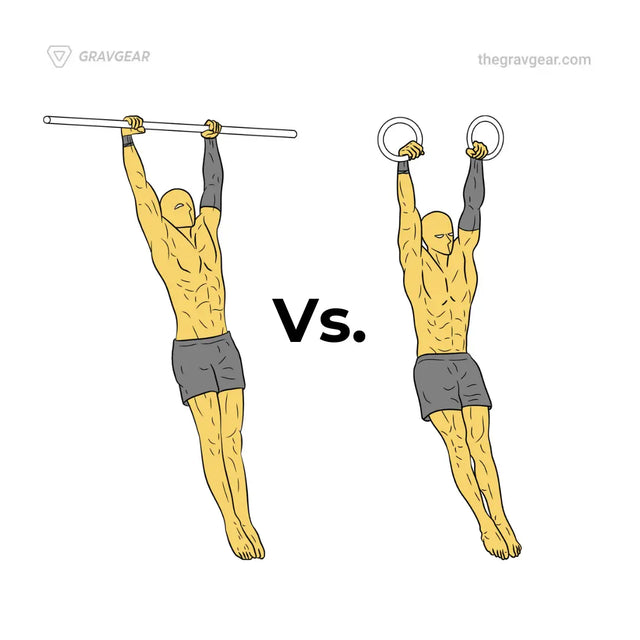
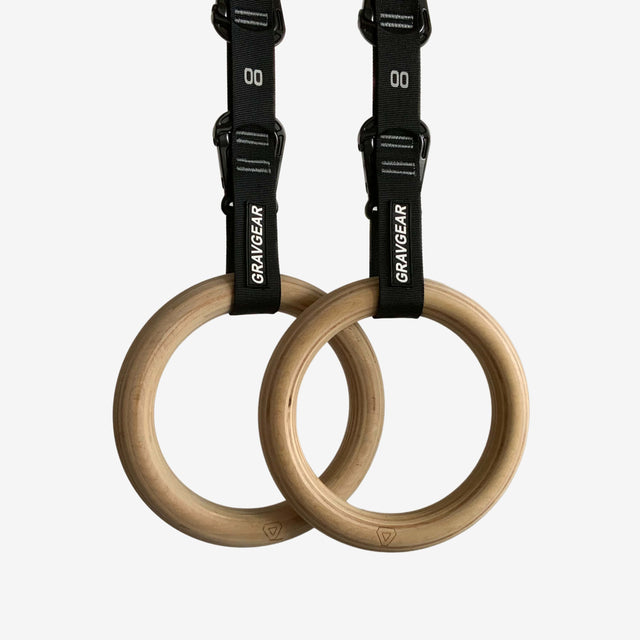




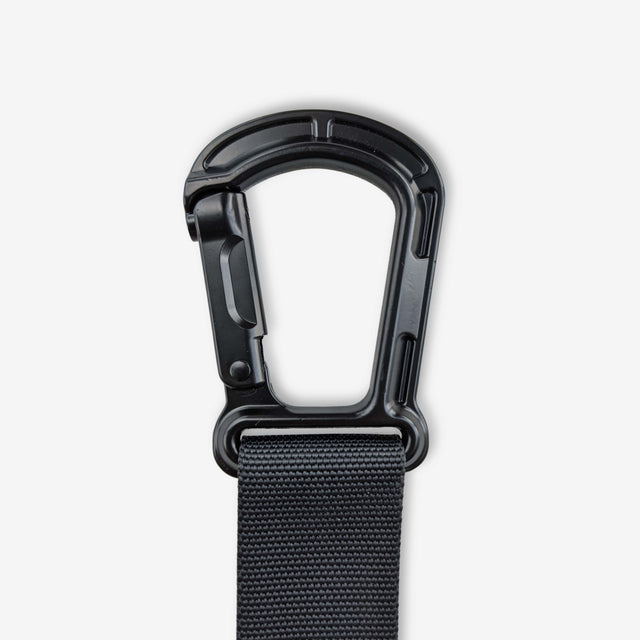

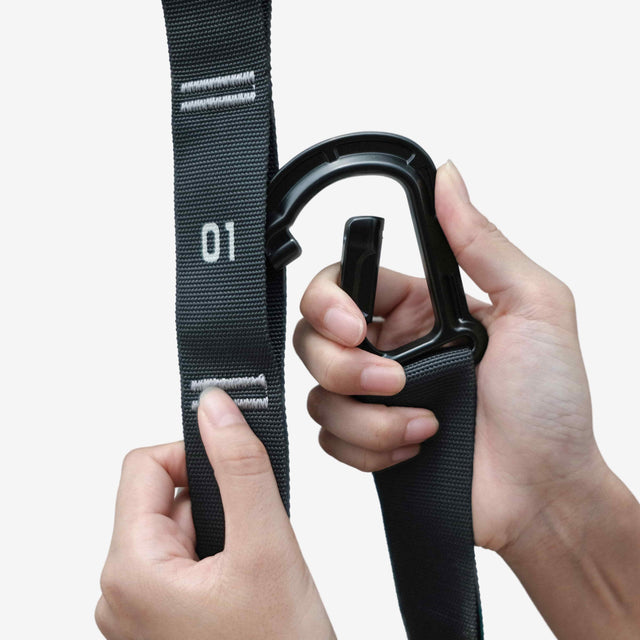
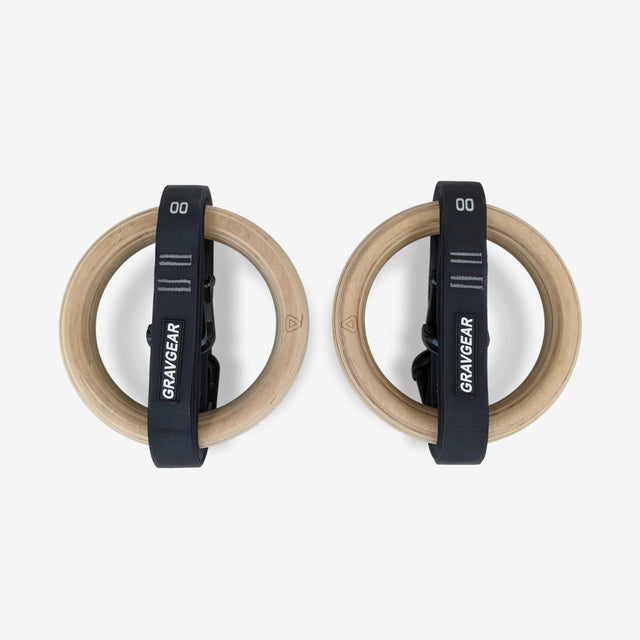
0 Comments
There are no comments for this article. Be the first one to leave a message!